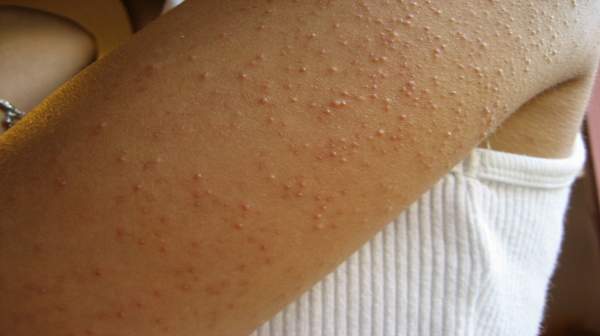What's in this article?
Keratosis pilaris is a common, harmless skin condition. It causes small, hard bumps that may make your skin feel like sandpaper.
The bumps are often light-colored. They usually appear on your upper arms, thighs, and buttocks, sometimes with redness or swelling. They can also show up on your face, but that’s less common.
Except for some itching, keratosis pilaris doesn’t hurt and doesn’t get worse. Many children and teens get it, and it usually disappears as they get older.
Symptoms of Keratosis pilaris
Keratosis pilaris can occur at any age, but it’s more common in young children. Signs and symptoms include:
- Painless tiny bumps, typically on the upper arms, thighs, cheeks or buttocks
- Dry, rough skin in the areas with bumps
- Worsening when seasonal changes cause low humidity and skin tends to be drier
- Sandpaper-like bumps resembling goose flesh
What causes keratosis pilaris?
Keratosis pilaris is due to abnormal keratinisation of the lining of the upper portion of the hair follicle (the follicular infundibulum). Scale fills the follicle instead of exfoliating.
The tendency to keratosis pilaris has genetic origins, with autosomal dominant inheritance. This means that up to half of the children of an affected individual may display signs of keratosis pilaris to a variable degree.
Keratosis pilaris-like lesions can arise as a side effect of targeted cancer therapies such as vemurafenib.
Does keratosis pilaris affect the entire body?
Although possible, it is rare to have keratosis pilaris all over the body. The lesions in keratosis pilaris most characteristically involve the back of the upper arms. Other common locations include the back, thighs, buttocks and occasionally the face. It does not affect the eyes, mouth, palms, or soles.
Keratosis pilaris Treatment
Treatment may include:
- Moisturizing lotions to soothe the skin and help it look better
- Skin creams that contain urea, lactic acid, glycolic acid, salicylic acid, tretinoin, or vitamin D
- Steroid creams to reduce redness
Improvement often takes months and the bumps are likely to come back.
Keratosis pilaris Look Like?
What is the outcome for keratosis pilaris?
Keratosis pilaris may become less obvious in time. Atrophy or scarring with hair loss is permanent.
What are possible complications of keratosis pilaris?
Complications are infrequent since it’s primarily a cosmetic skin condition. However, temporary skin discoloration called post-inflammatory hypopigmentation (lighter than the regular skin color) or hyperpigmentation may occur after the inflamed, red bumps have improved or after a temporary flare. Permanent scarring may rarely occur from picking, overly aggressive treatments, or other inflammation.









